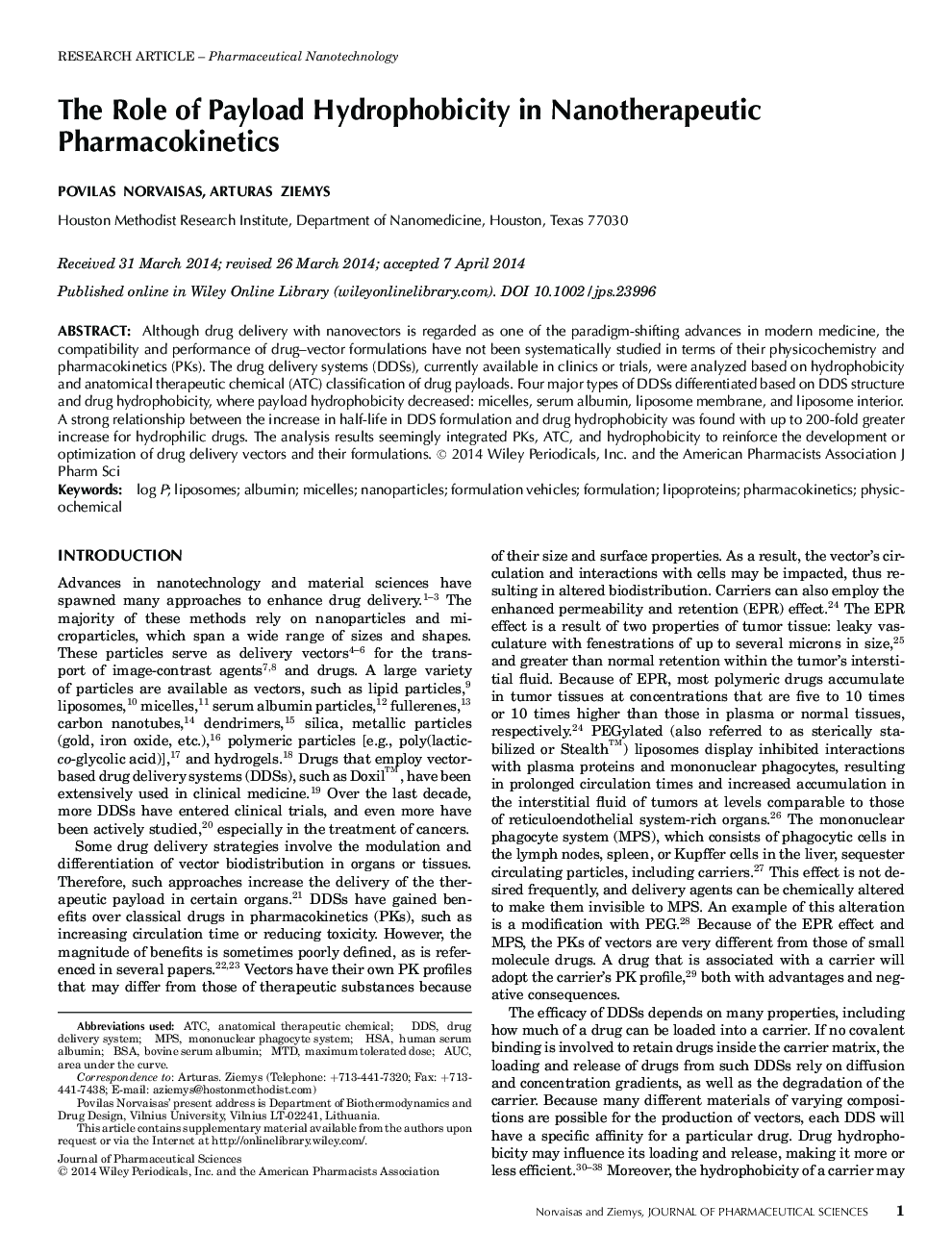| Article ID | Journal | Published Year | Pages | File Type |
|---|---|---|---|---|
| 10162463 | Journal of Pharmaceutical Sciences | 2014 | 10 Pages |
Abstract
Although drug delivery with nanovectors is regarded as one of the paradigm-shifting advances in modern medicine, the compatibility and performance of drug-vector formulations have not been systematically studied in terms of their physicochemistry and pharmacokinetics (PKs). The drug delivery systems (DDSs), currently available in clinics or trials, were analyzed based on hydrophobicity and anatomical therapeutic chemical (ATC) classification of drug payloads. Four major types of DDSs differentiated based on DDS structure and drug hydrophobicity, where payload hydrophobicity decreased: micelles, serum albumin, liposome membrane, and liposome interior. A strong relationship between the increase in half-life in DDS formulation and drug hydrophobicity was found with up to 200-fold greater increase for hydrophilic drugs. The analysis results seemingly integrated PKs, ATC, and hydrophobicity to reinforce the development or optimization of drug delivery vectors and their formulations.
Keywords
Related Topics
Health Sciences
Pharmacology, Toxicology and Pharmaceutical Science
Drug Discovery
Authors
Povilas Norvaisas, Arturas Ziemys,
